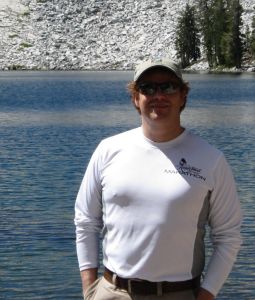Department of Biological Sciences
General Directory
Jeff Dudycha
| Title: | Professor Research Concentration - Ecology; Evolution |
| Department: | Biological Sciences McCausland College of Arts and Sciences |
| Email: | dudycha@biol.sc.edu |
| Phone: | 803-777-3987 |
| Office: | CLS, Room 608 |
| Resources: | Dudycha Lab Website |

Research
Evolutionary Processes in the Wild
Research in our lab is rooted in evolutionary ecology, and is unified by the goal of understanding how adaptive and non-adaptive evolutionary processes interact to produce the biodiversity seen in nature. This goal has taken us from field demography through quantitative genetics, to genomics, functional genetics, physiology, and back again. We are particularly interested in ecological diversification, genotype-environment interactions, and phenotypic plasticity.
Our Favorite Organisms
For years, our primary model system has been the crustacean Daphnia. It allows us to juxtapose ecological and genetic data in our explorations of adaptation and divergence as they proceed in the wild because it is uniquely amenable to field work, lab experiments, and genetic analysis. Daphnia are also ecologically important, often being the dominant herbivore in the systems they inhabit, and have been a key study organism since the dawn of experimental ecology. Much of our work involves comparisons of populations along the pond-lake gradient, focusing on the divergence of Daphnia into temporary ponds and large permanent lakes.
Recently, we have added cryptophyte phytoplankton as a major focus in the lab. Cryptophytes are single-celled algae that arose as the product of secondary endosymbiosis. As a consequence, they have an extra genome. They also have unusual photosynthetic pigments, and these pigments are unusually diverse. Cryptophytes are found in marine and fresh waters world wide, and we are trying to understand the connection between their photosynthetic diversity and their niche diversity.
Our Favorite Traits
Many of the traits we study are linked to aging, the progressive decline of performance that accompanies the unavoidable increase in adult age as time passes. Thus much of our work falls into the realm of life history evolution and trade-offs in resource acquisition and allocation. Other traits are tied to vision and eyes, and we use these to understand how animals have evolved to acquire information from their environment. Thinking about vision led us into thinking about how organisms cope with the extraordinary variability of light in water. Which in turn led us to thinking about photosynthesis as another biological process dependent on light, and thus we embarked on our work with cryptophytes.
Publications